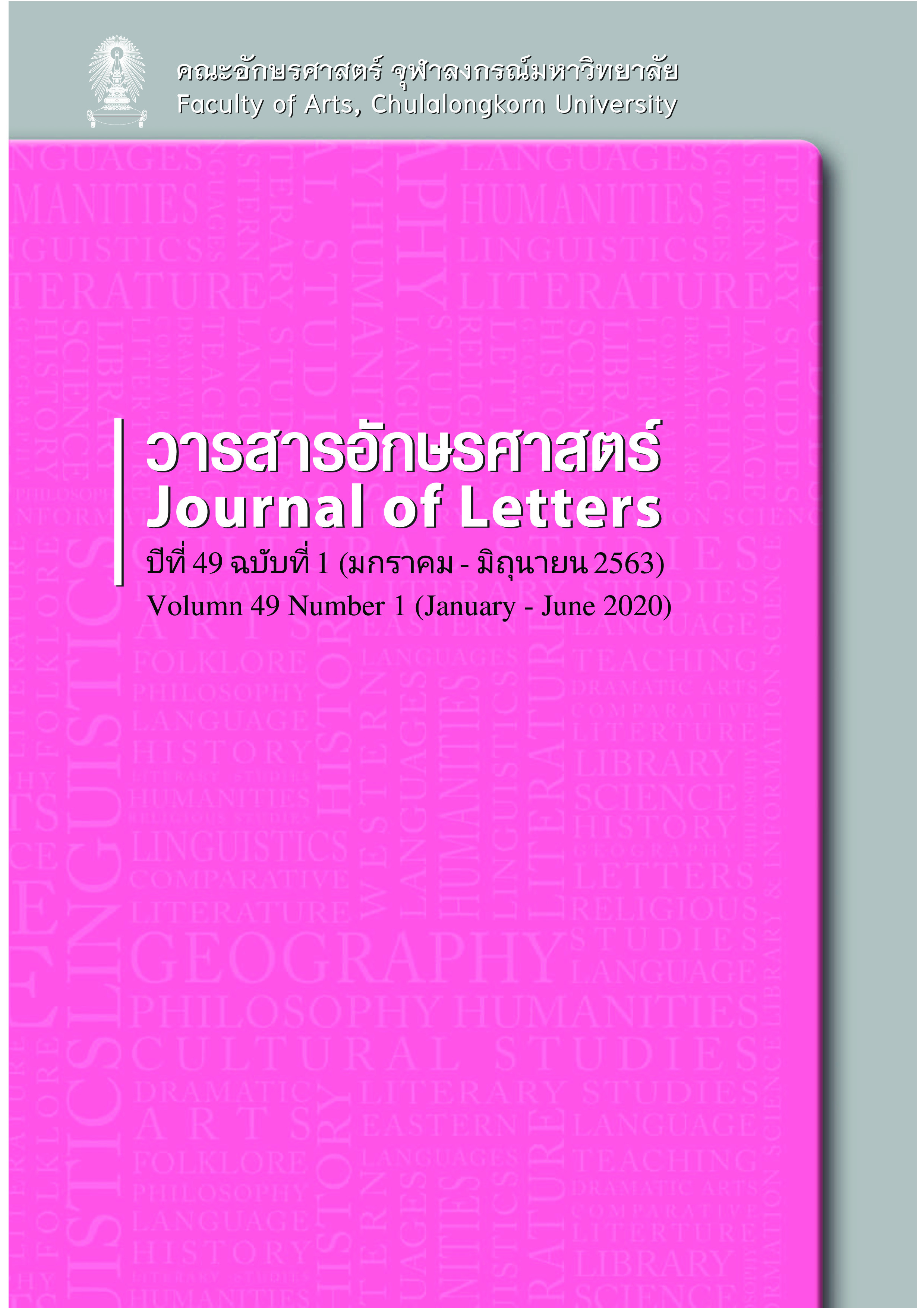Fashion and social status:
a Classic Formula of the White Telephone Films during the Fascist Italy
Keywords:
Italian Fashion, Social status, White Telephone Films, Propaganda, FascismAbstract
This article analyses the relationship between fashion, new Italian lifestyle and social mobility that constitute the classic formula of the Italian screwball comedy, the so-called “White Telephone Films”, mainly produced during the second decade of the Fascist period. It focuses on three Italian films directed by Mario Camerini which are Darò un milione (1935), Il Signor Max (1937) and I Grandi Magazzini (1939). Since the mid-1930s, the Government of Benito Mussolini used this genre of Italian cinema as a political tool to manipulate public opinions and to make them accept or even agree with fascist policies. Therefore, the director had to present only beautiful and positive images of the Italian way of life through petite bourgeoisie and working class characters in an idealised society, as it was expected that the simply luxurious life in films would convince and inspire the audience to believe in the values of Fascism and to give consensus to the Fascist Government. The costume designs played an important role in this because they not only represented the characteristics and identities of the characters, coming from different socio-economic backgrounds, but also portrayed how Italian people lived their lives at that time. Moreover, the Italian fashion of the Thirties was integral to the Fascist ideal of the Myth of Italian New Man and Woman and the campaign for Italian Self-sufficiency which contributed to the development of Nationalism before and during the Second World War.
References
ภาษาไทย / Thai
Chairat Charoensin-o-larn ไชยรัตน์ เจริญสินโอฬาร. 2012. Sanyawittaya krongsarngniyom lang-krong sarngniyom kub karnsueksa ratthasat สัญวิทยา โครงสร้างนิยม หลังโครงสร้างนิยมกับการศึกษา รัฐศาสตร์ [Semiology, Structuralism, Poststructuralism and the Study of Political Science]. Bangkok: Wiphasa.
Kanchana Kaewthep กาญจนา แก้วเทพ. 1999. Karn wikroh sue: Naewkid lae teknik การวิเคราะห์สื่อ: แนวคิดและเทคนิค [Media Analysis: Concepts and Techniques]. Bangkok: Edison Press Products.
ภาษาต่างประเทศ / Foreign language
Archivio Fotografico Touring Club Italiano. 1931. Veduta interna dei Grandi Magazzini la Rinascente [Online image]. https://archives.rinascente.it/en/paths/la-rinascente-prima-della-rinascente, accessed May 18, 2020.
Ben-Ghiat, Ruth. 2000. La cultura fascista. Bologna: Mulino.
Biancini, Bruno. 1942. Dizionario Mussoliniano: 1500 affermazioni e definizioni del Duce su 1000 argomenti. Milano: U. Hoepli.
Bogatyrev, Peter. 1971. The functions of folk costume in Moravian Slovakia. The Hague: Mouton.
Bruni, David. 2013. Commedia degli anni Trenta. Milano: Il Castoro.
Camerini, Mario (Director). 1937. Il Signor Max [DVD]. Rome: Ripley’s Home Video.
Camerini, Mario (Director). 1937. Il Signor Max [DVD]. Rome: Ripley’s Home Video.
Camerini, Mario (Director). 1939. I Grandi Magazzini [DVD]. Rome: Ripley’s Home Video.
Cannistraro, Philip V. 1975. La fabbrica del consenso. Fascismo e mass media. Bari: Laterza.
Corrigan, Peter. 2008. The Dress society: Clothing, the Body and Some meanings of the World. London: Sage.
Crane, Diana. 2012. Fashion and Its Social Agendas: Class, Gender and Identity in Clothing. Chicago: University of Chicago Press.
De Grazia, Victoria. 2007. Le donne nel regime fascista (3rd ed.). Venezia: Marsilio.
Ferraro, Paola. 2013. La moda italiana nel cinema: Dal Ventennio fascista alla Dolce vita. Padova: Esedra.
Freddi, Luigi. 1994. Il Cinema: Il Governo dell’Immagine, Centro Sperimentale di Cinematografia. Roma: Gremese.
Gentile, Emilio. 2005. Fascismo: Storia e Interpretazione. Bari: Laterza.
Germani, Sergio G. (Director). 2009. Conversazione con Mario Camerini [DVD]. Rome: Ripley’s Home Video.
Gnoli, Sofia. 2014. The origins of Italian fashion: 1900-1945. London: Victoria & Albert Museum.
Gnoli, Sofia. 2017. Eleganza fascista: La moda dagli anni Venti alla fine della guerra. Roma: Carocci.
Grandi, S., & Vaccari, A. 2004. Vestire il Ventennio. Bologna: Bononia University Press.
Lupano, M., & Vaccari, A. 2009. Una giornata moderna: Moda e stili nell’Italia fascista. Bologna: Damiani.
Mussolini, Benito. 1961. Opera omnia di Benito Mussolini (Vols. 1-35; Susmel Edoardo, Susmel Duilio, Eds.). Firenze: La Fenice.
Muzzarelli, Maria Giuseppina. 2014. Breve storia della moda in Italia. Bologna: Il Mulino.
Paulicelli, Eugenia. 2004. Fashion under Fascism: Beyond the Black Shirt. Oxford: Berg.
Reich, J., & Garofalo P (Eds.). 2002. Re-viewing Fascism: Italian Cinema 1922-1943. Bloomington: Indiana University Press.
Robinson, Fred Miller. 1993. The man in the bowler hat: his history and iconography. Chapel Hill: The University of North Carolina Press.
Saronni, Elisa. 2015. La vita è bella? Finzione e realtà nel cinema fascista dei <>. Milano: Albo Versorio.
Savio, Francesco. 1975. Ma l’amore no. Realismo, formalismo, propaganda e telefoni bianchi nel cinema italiano di regime (1930-1943). Milano: Sonzogno.
Sproles, George. 1981. Perspectives of Fashion. Minneapolis: Burgess.
Tarquini, Alessandra. 2011. Storia della cultura fascista. Bologna: Il Mulino.
Downloads
Published
How to Cite
Issue
Section
License
Copyright and plagiarism
Authors are responsible for obtaining permission to use copyrighted materials from copyright owners. Authors are responsible for observing requisite copyright law when quoting or reproducing copyrighted materials. Quotations and reproductions of content from other published sources must be accompanied by a reference and all sources should be clearly listed in the references section. Quotations and reproductions of content from external sources without due attribution could be considered a severe infringement of academic conduct and may constitute a legal offence under the Copyright Act of B.E. 2537. Any legal ramifications arising from the infringement of copyright regulations would be the sole responsibility of the author(s).



